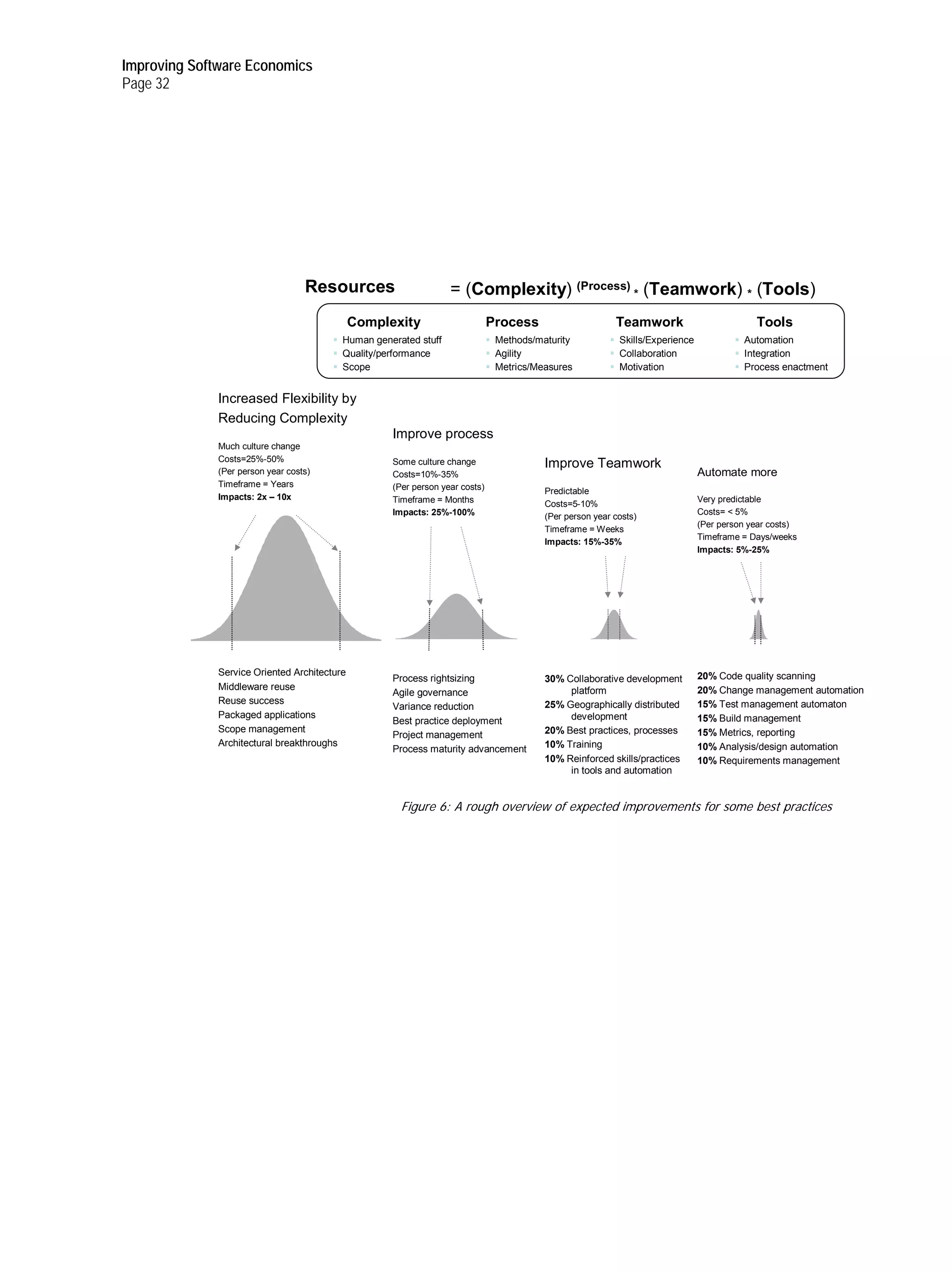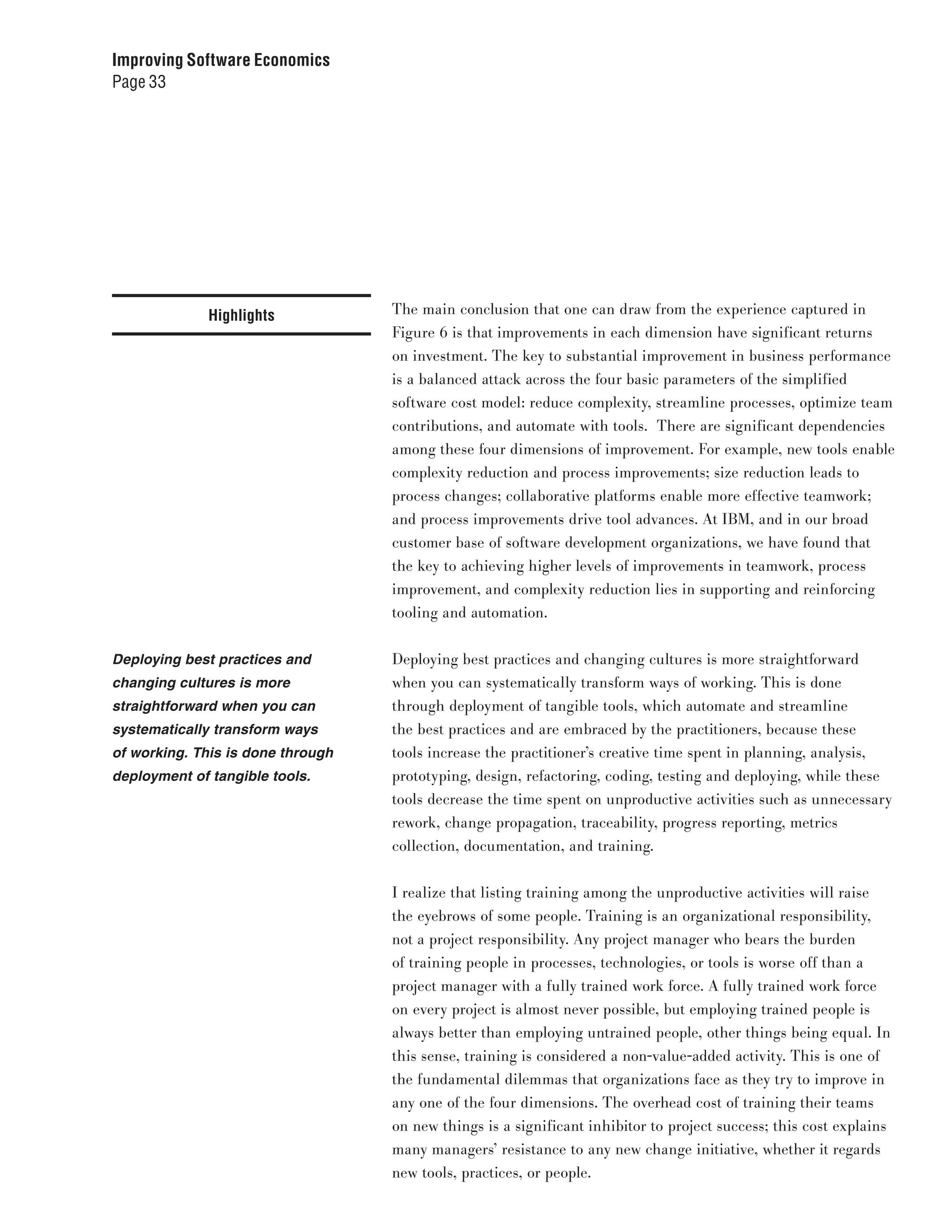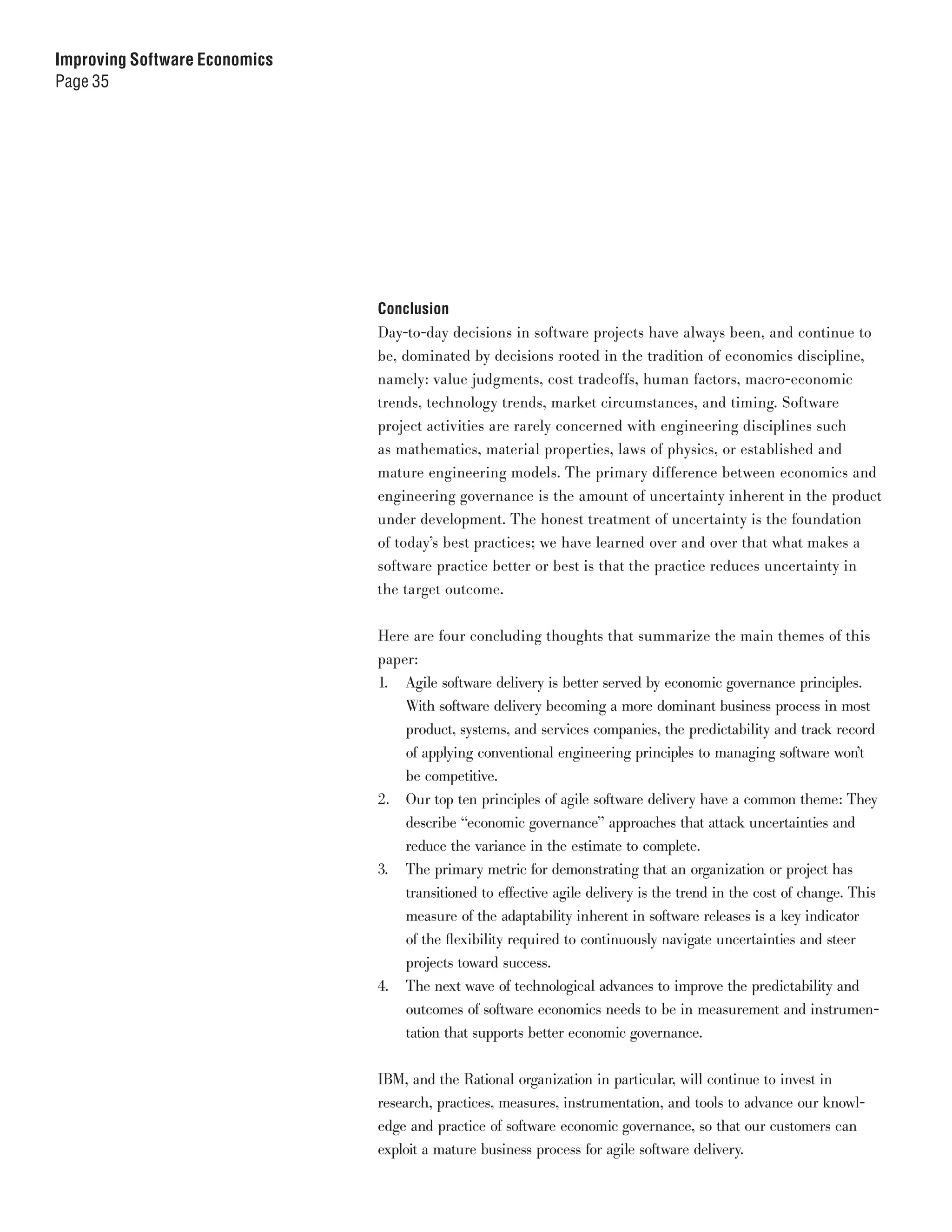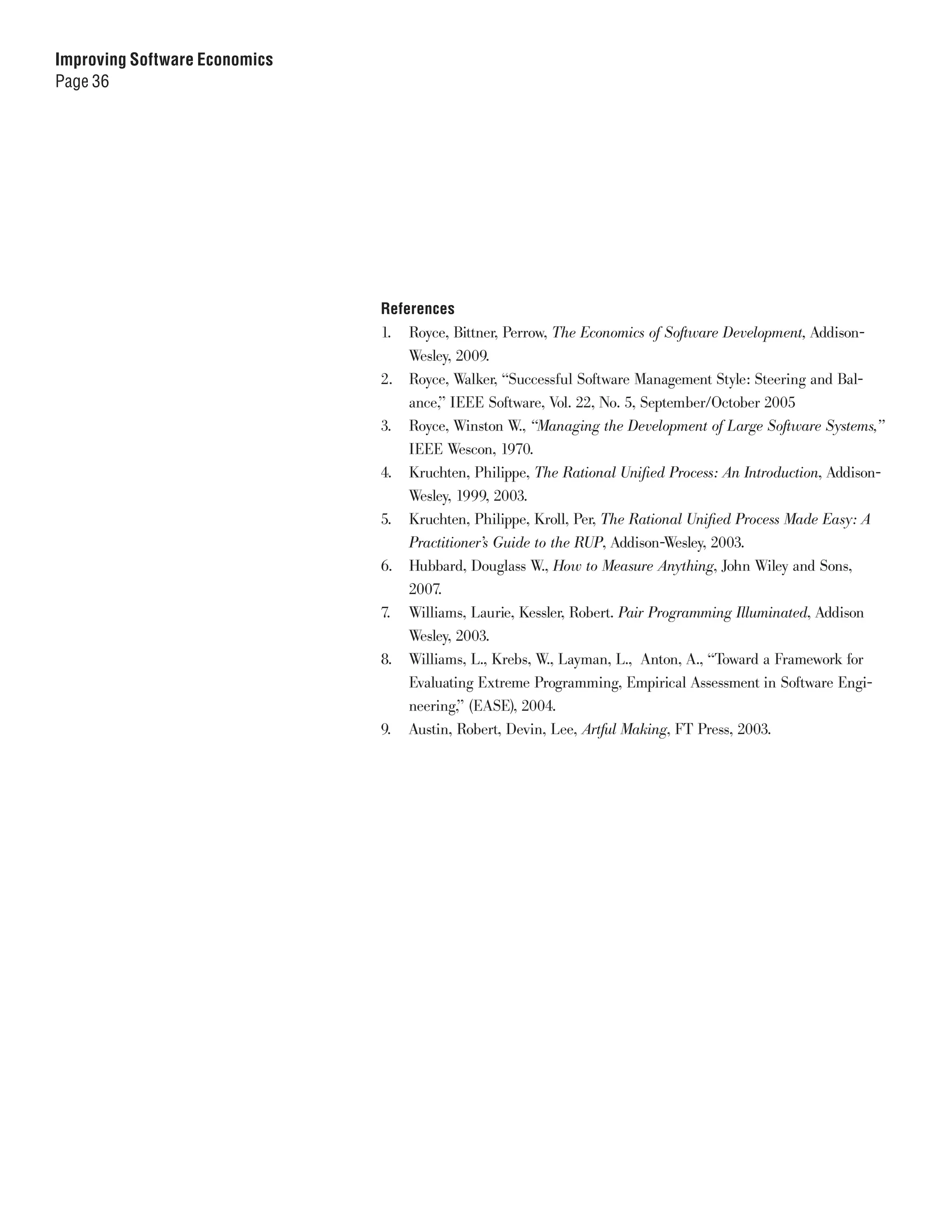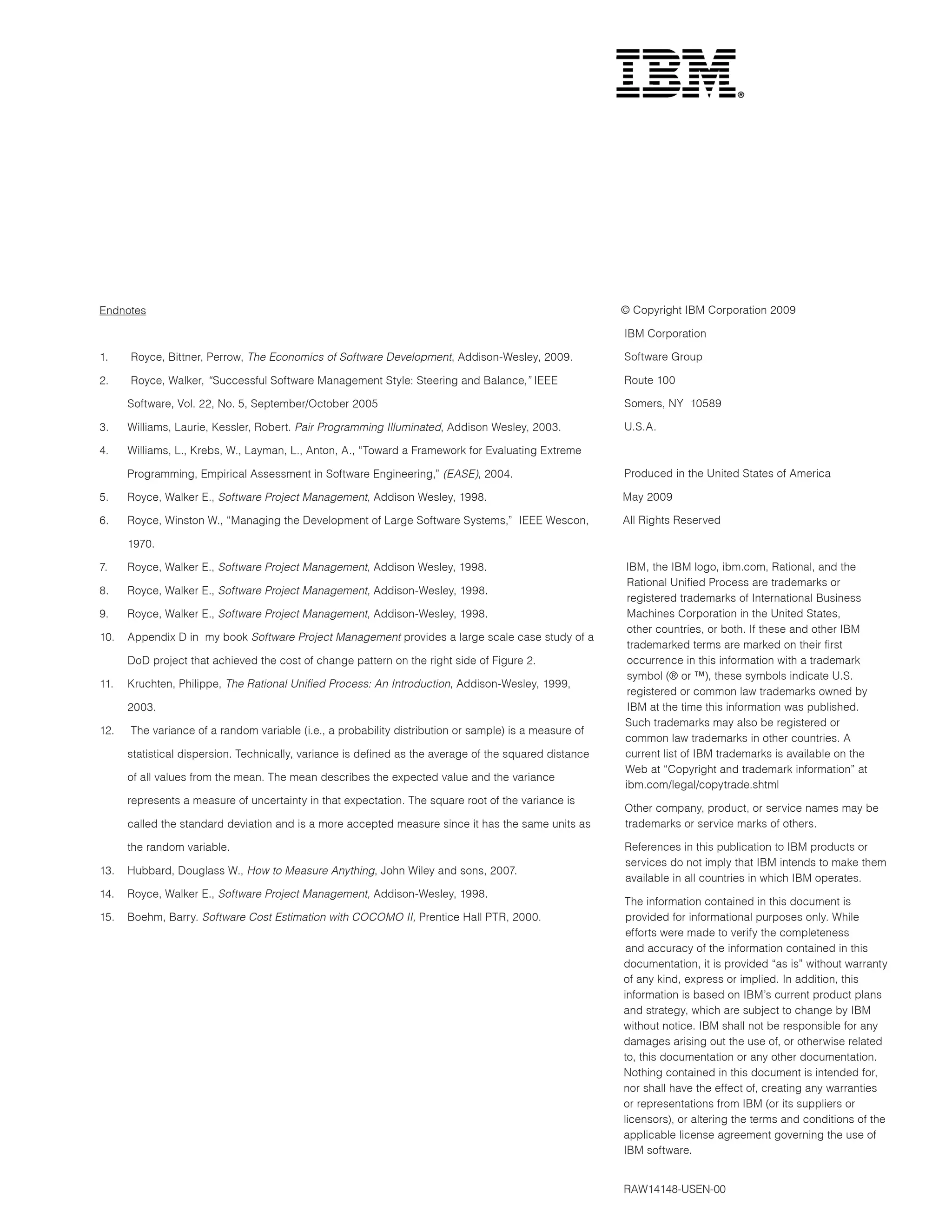The document discusses the evolution of software development towards agile delivery, emphasizing the importance of economic principles over engineering practices in achieving software delivery efficiency. It identifies a significant shift from a development-oriented approach to a delivery-focused mindset that prioritizes measurable results and quality. The paper presents top principles in software management and highlights the transition from conventional waterfall processes to modern agile methodologies to improve success rates in software projects.

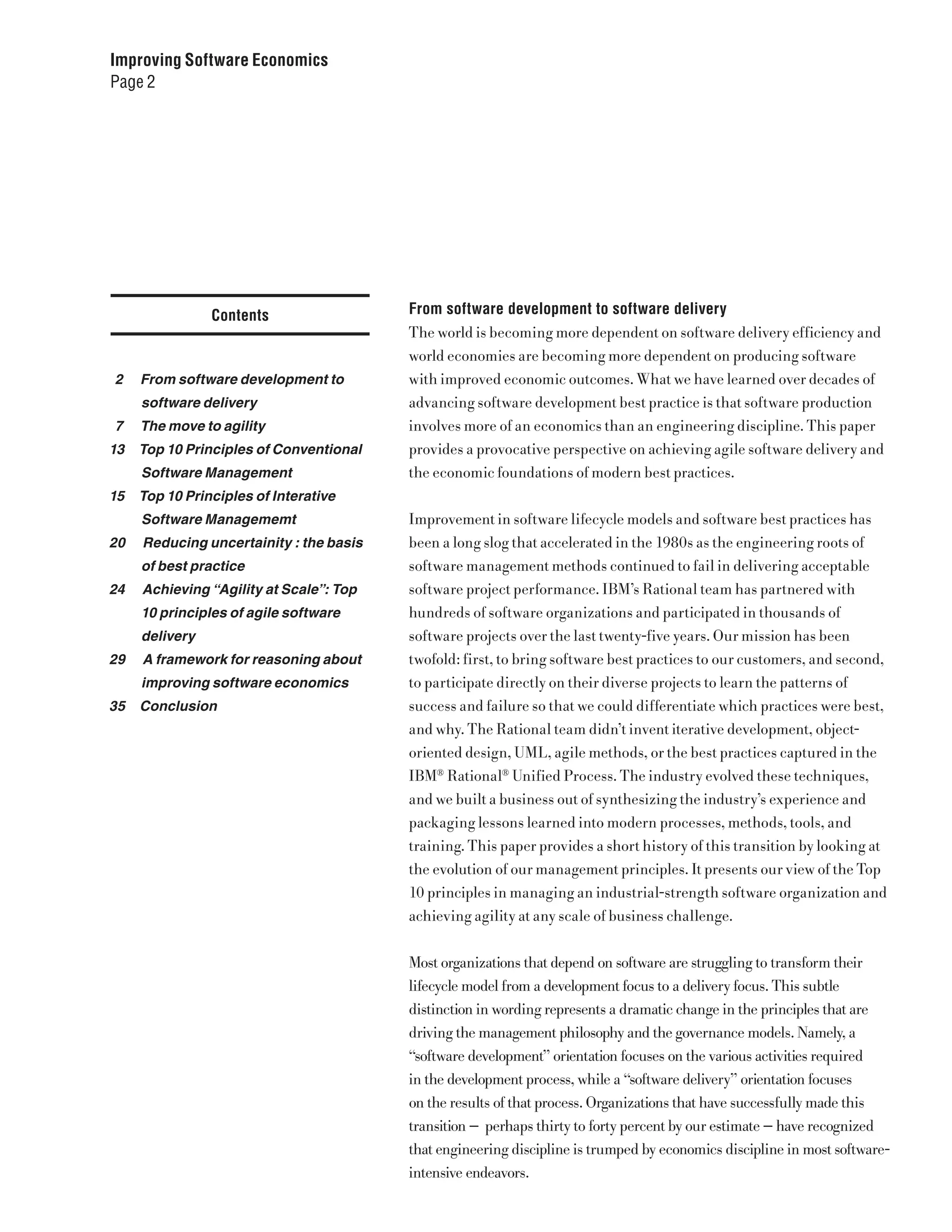
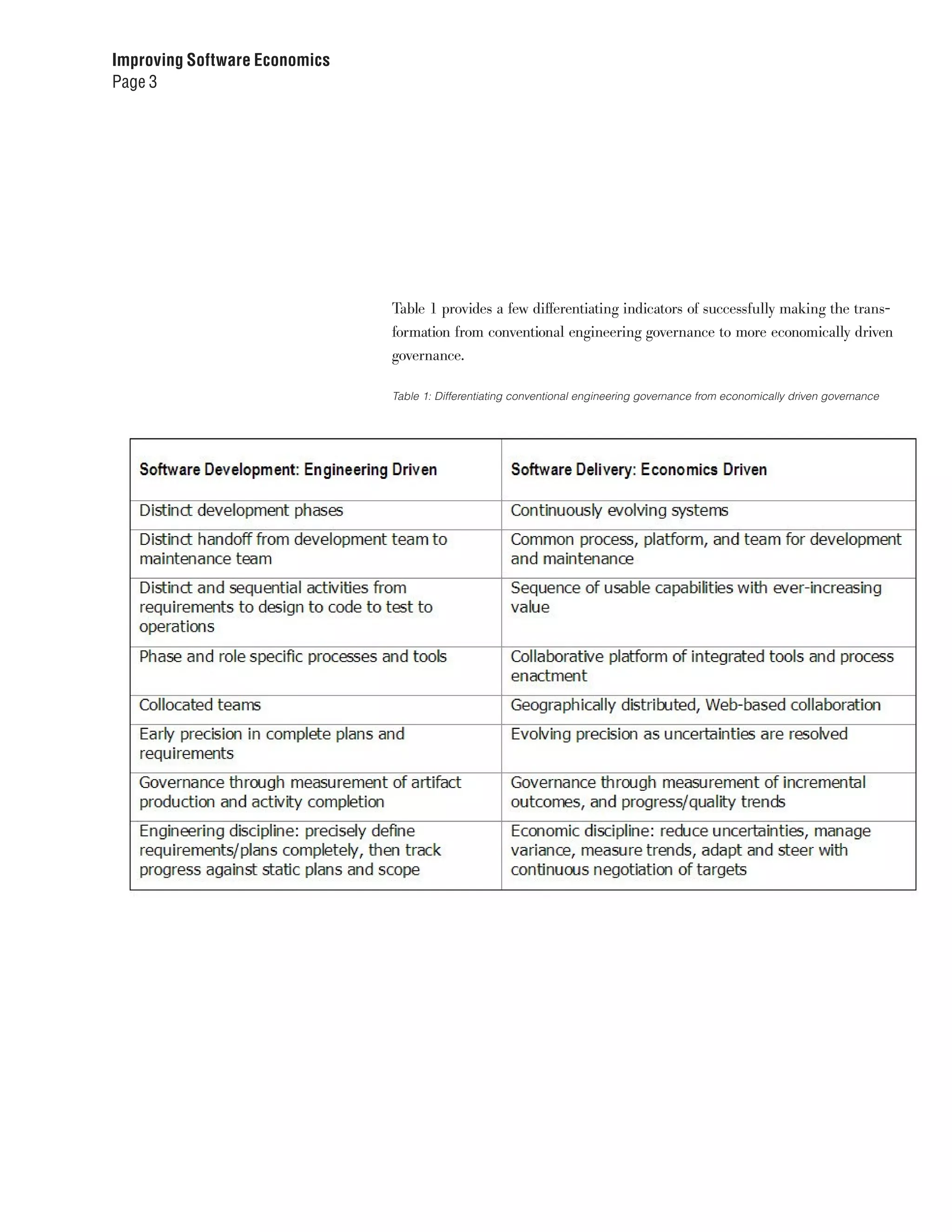

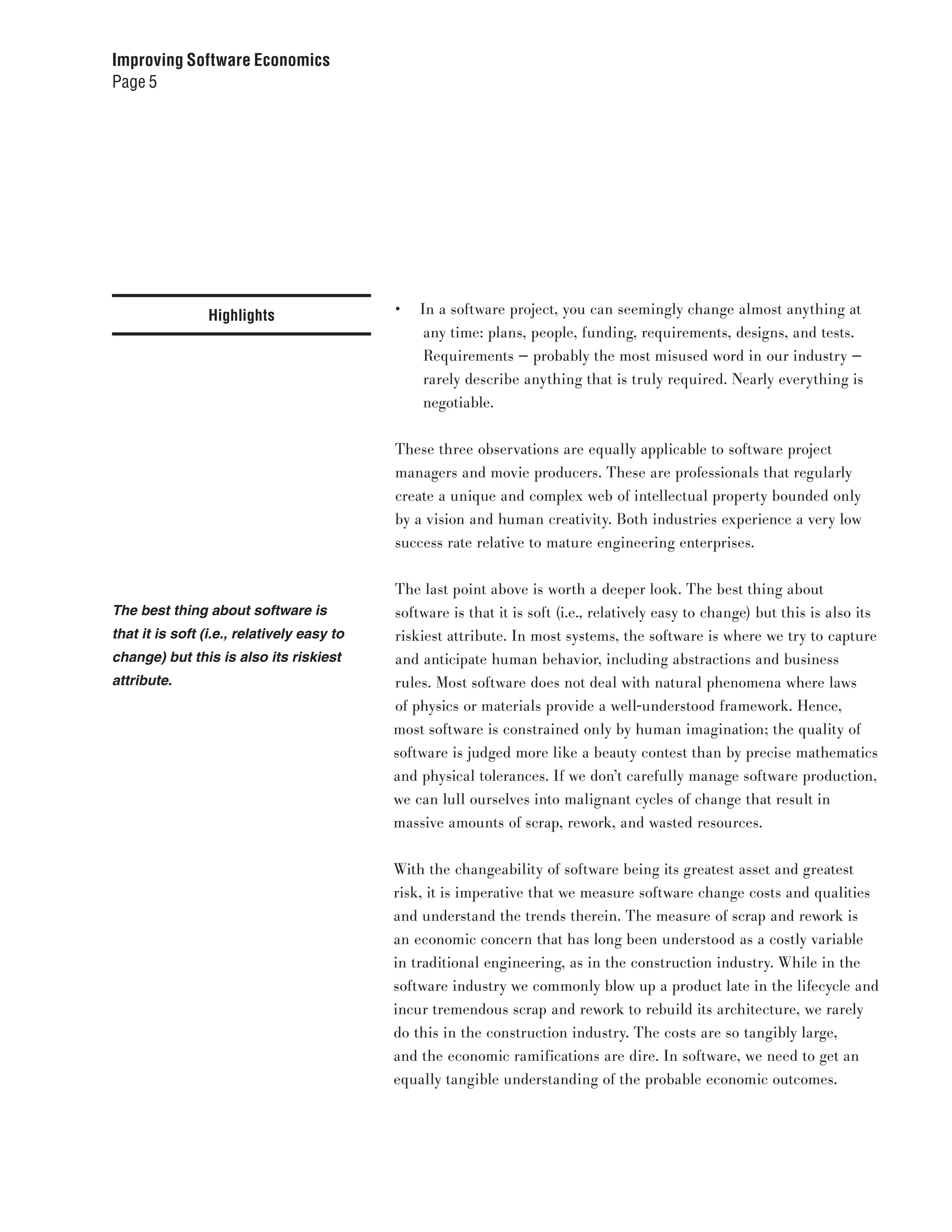
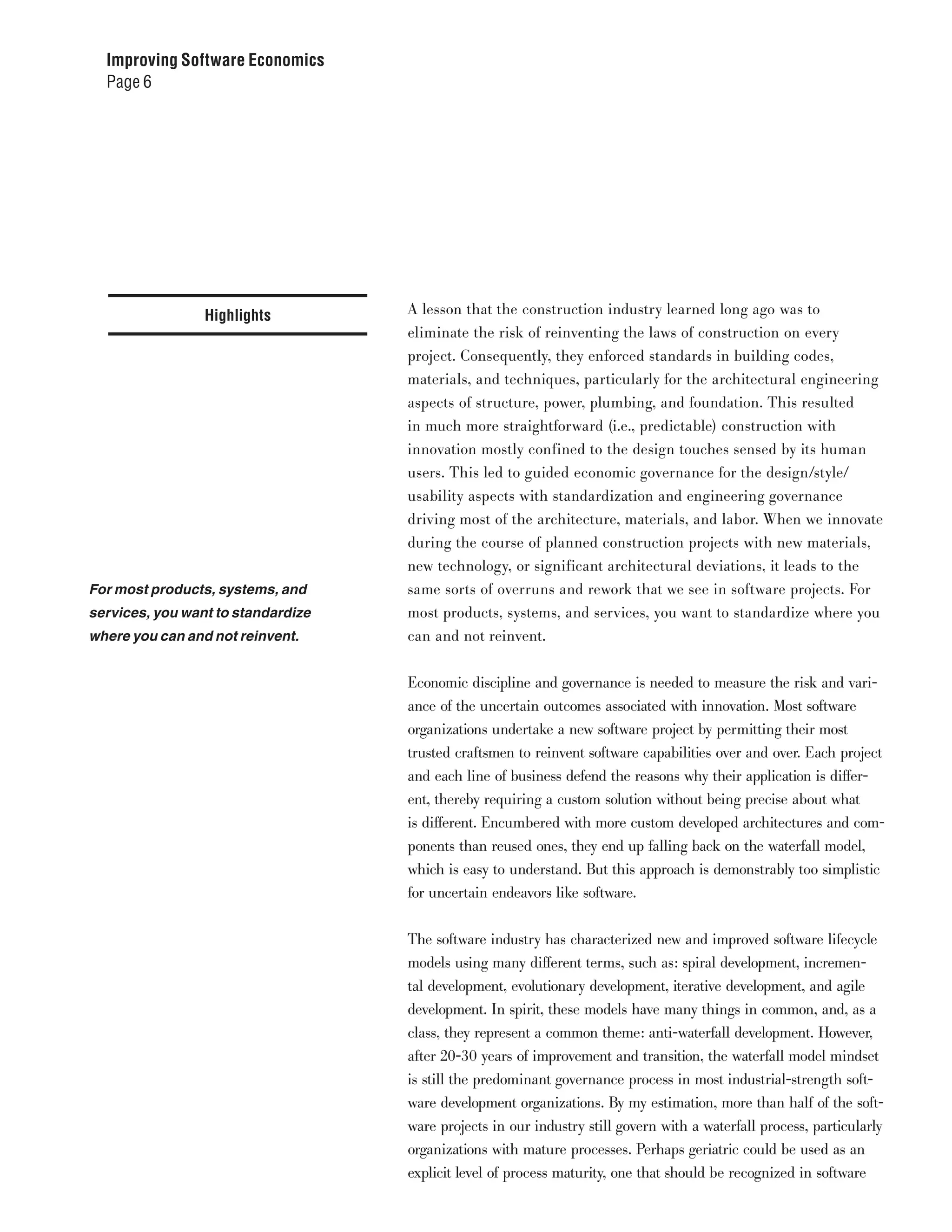
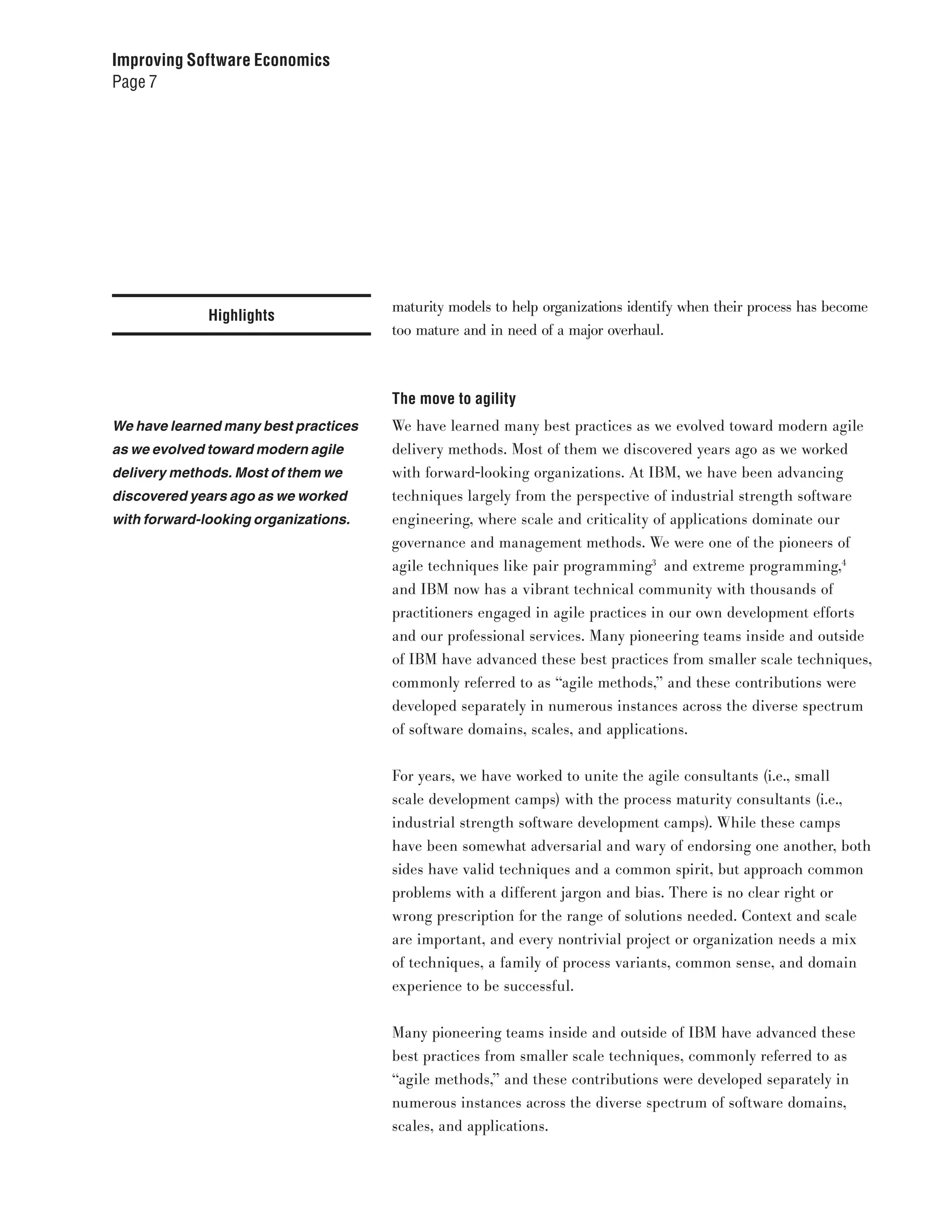

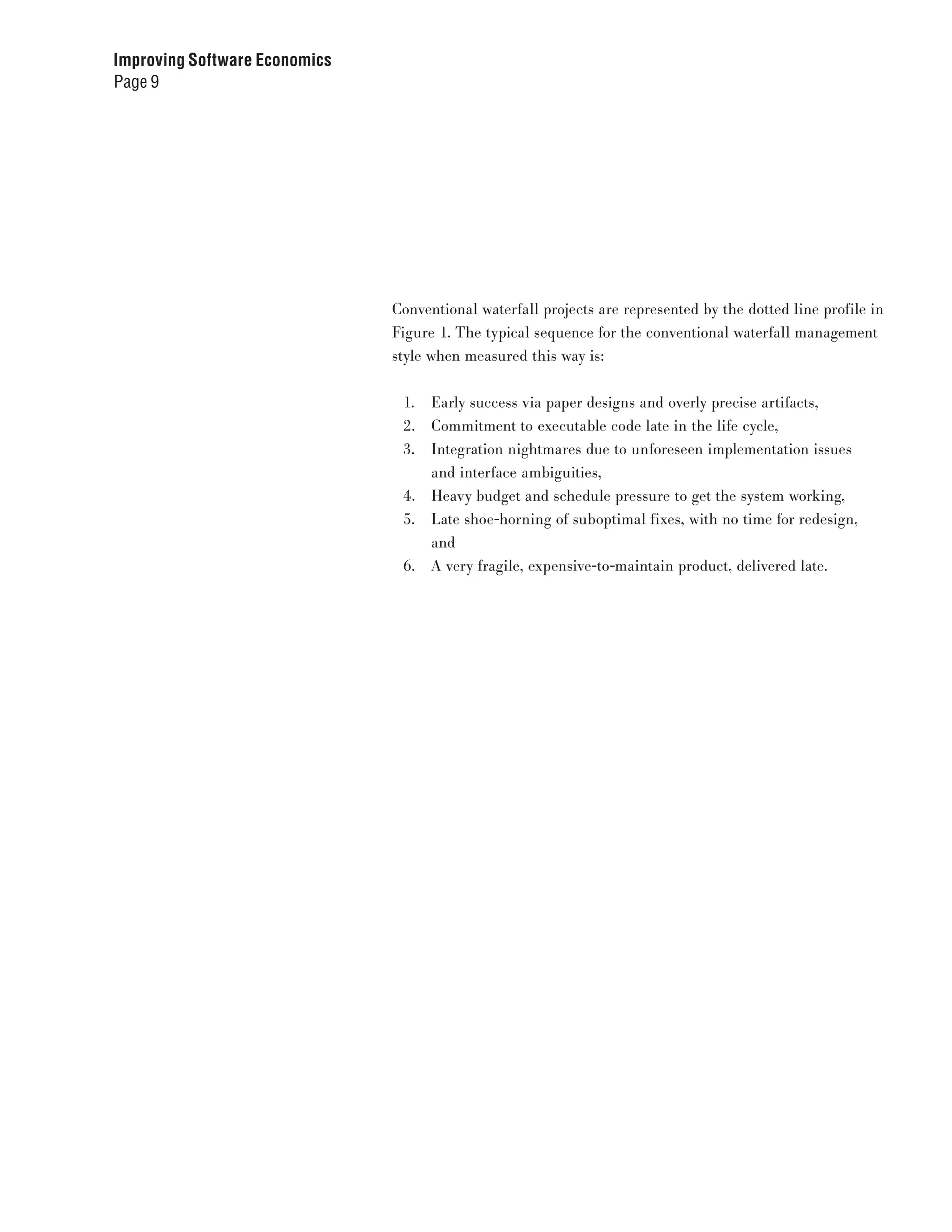

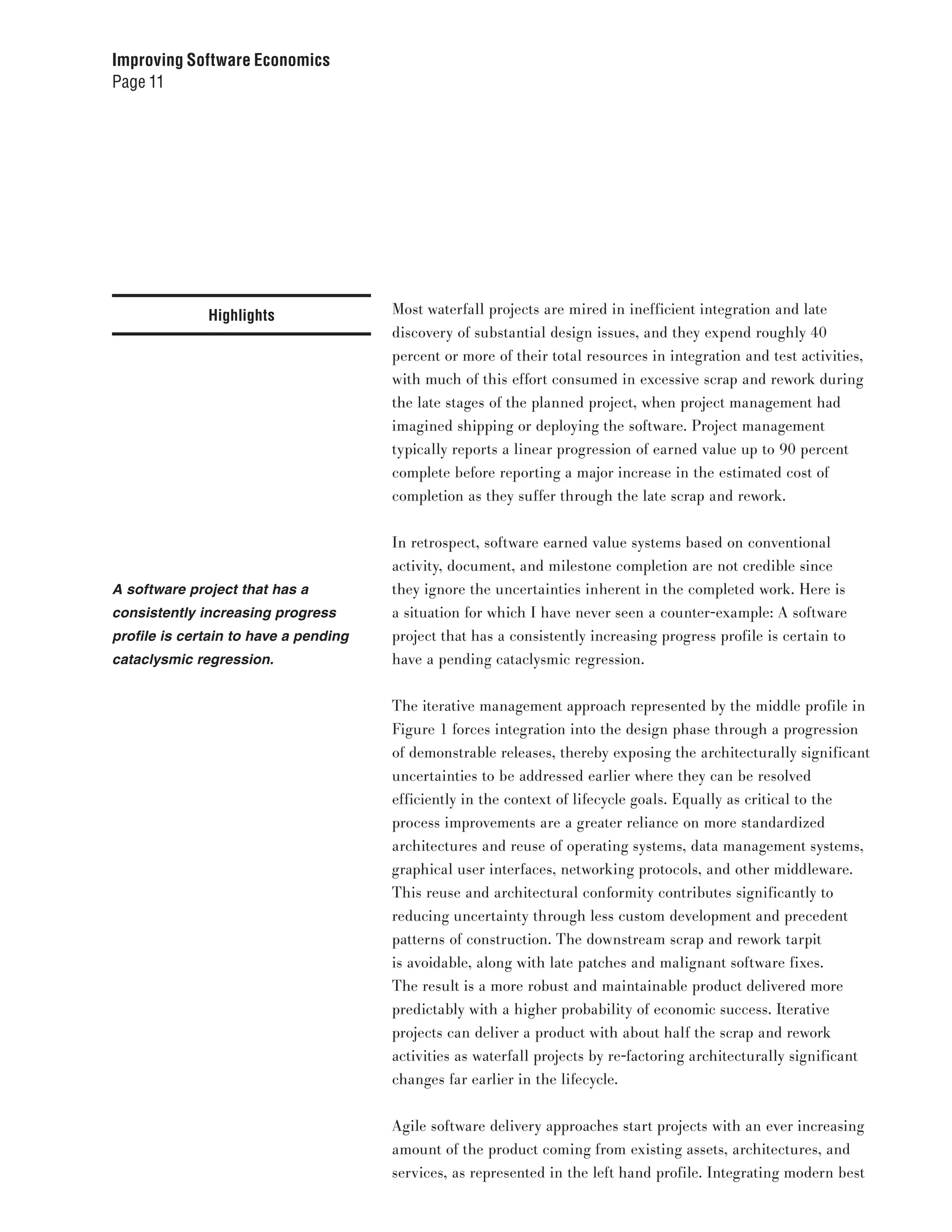



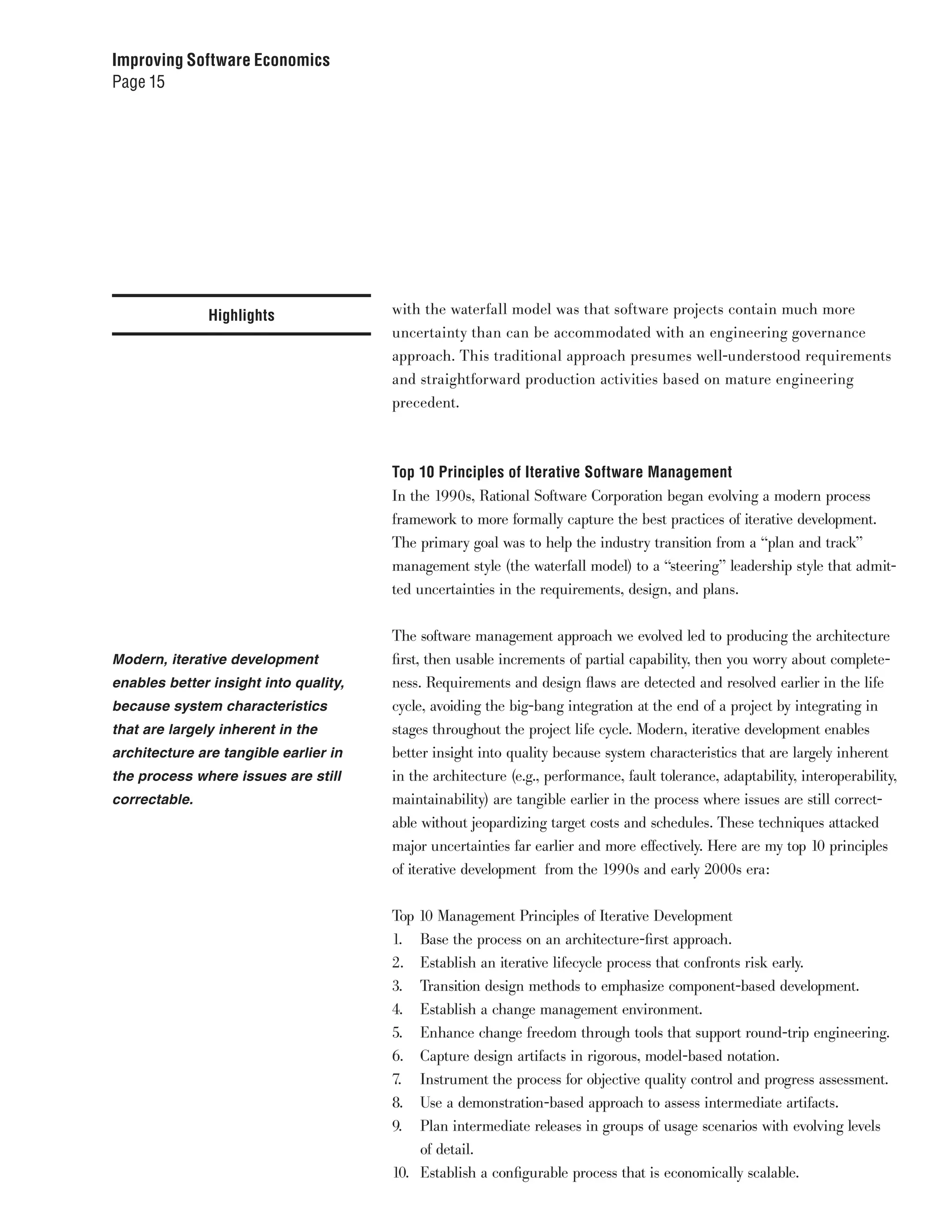
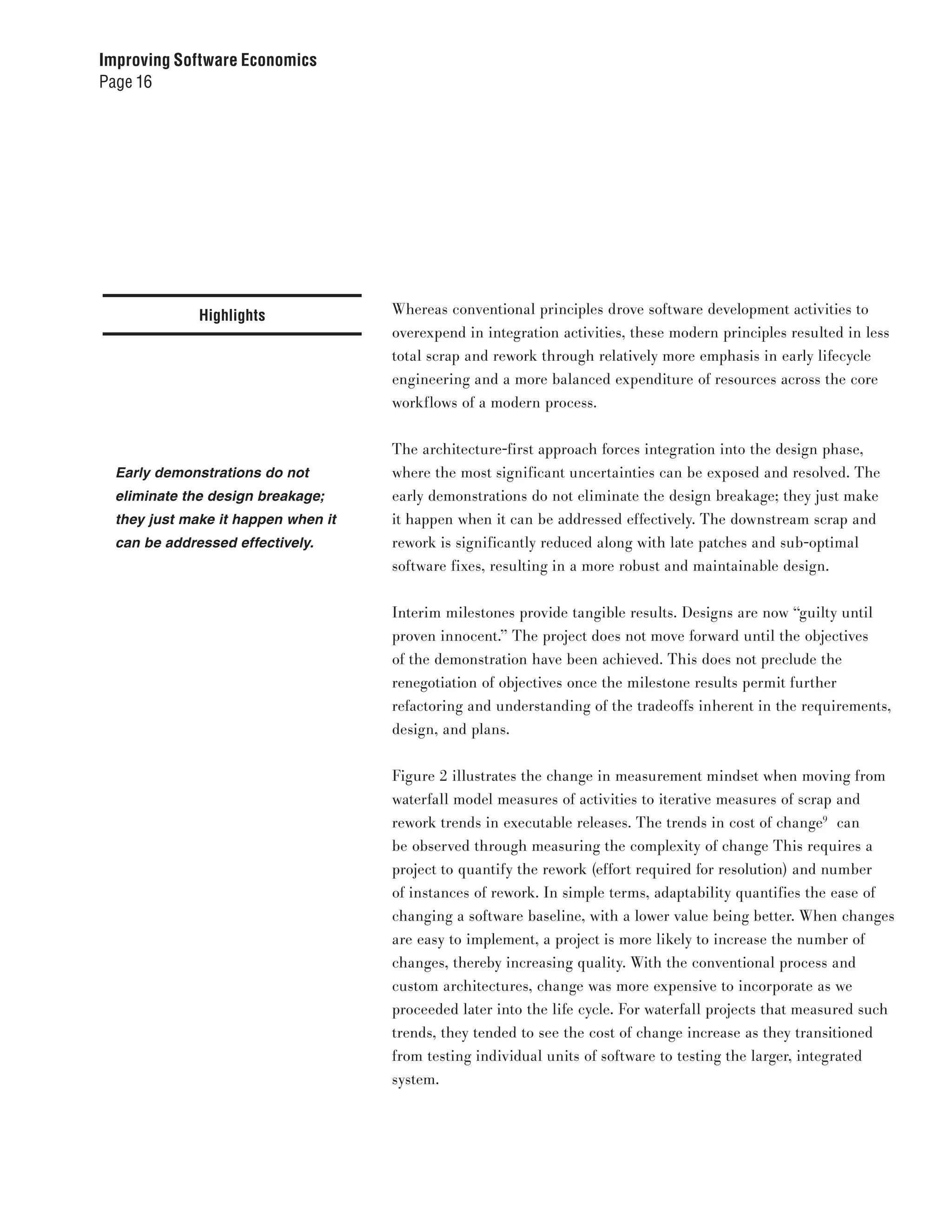
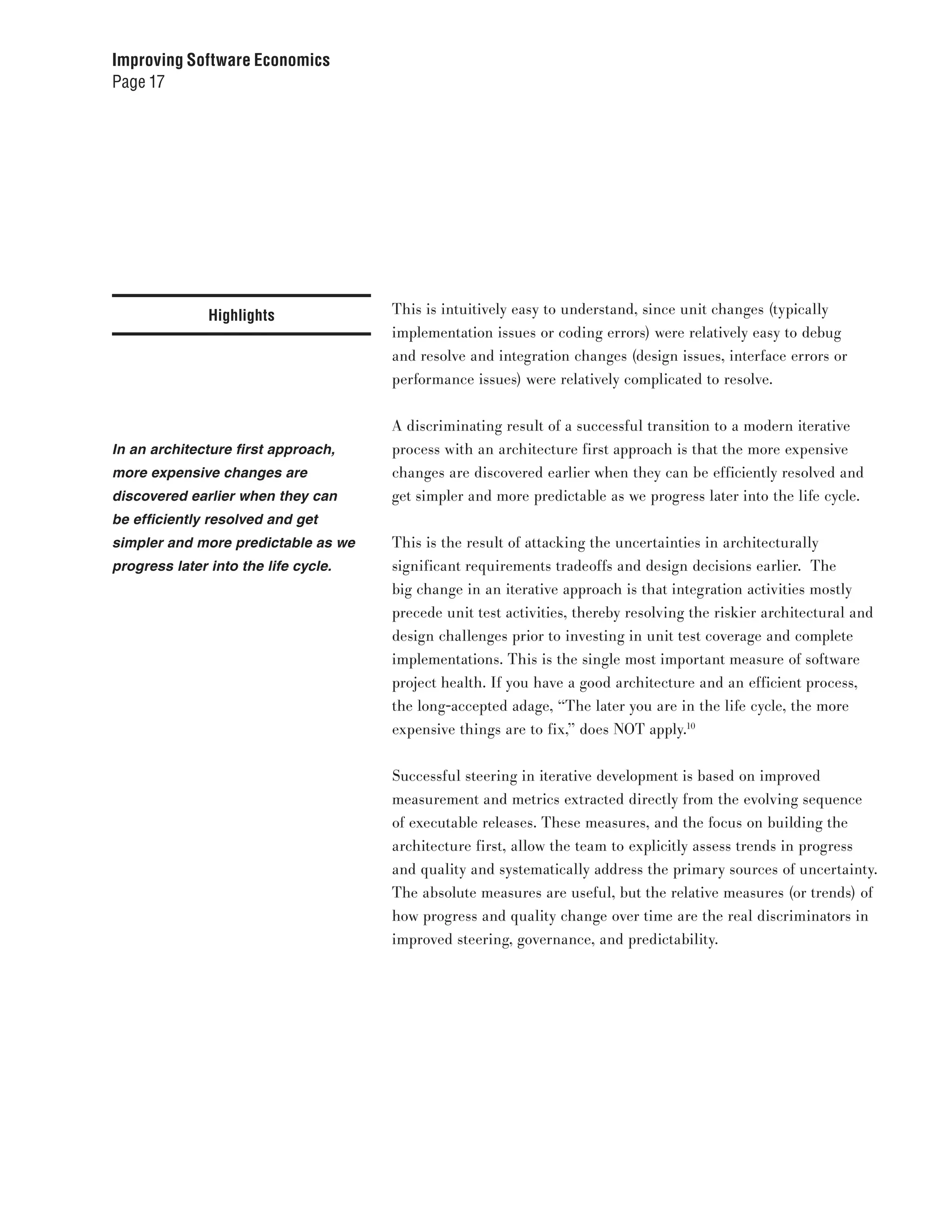
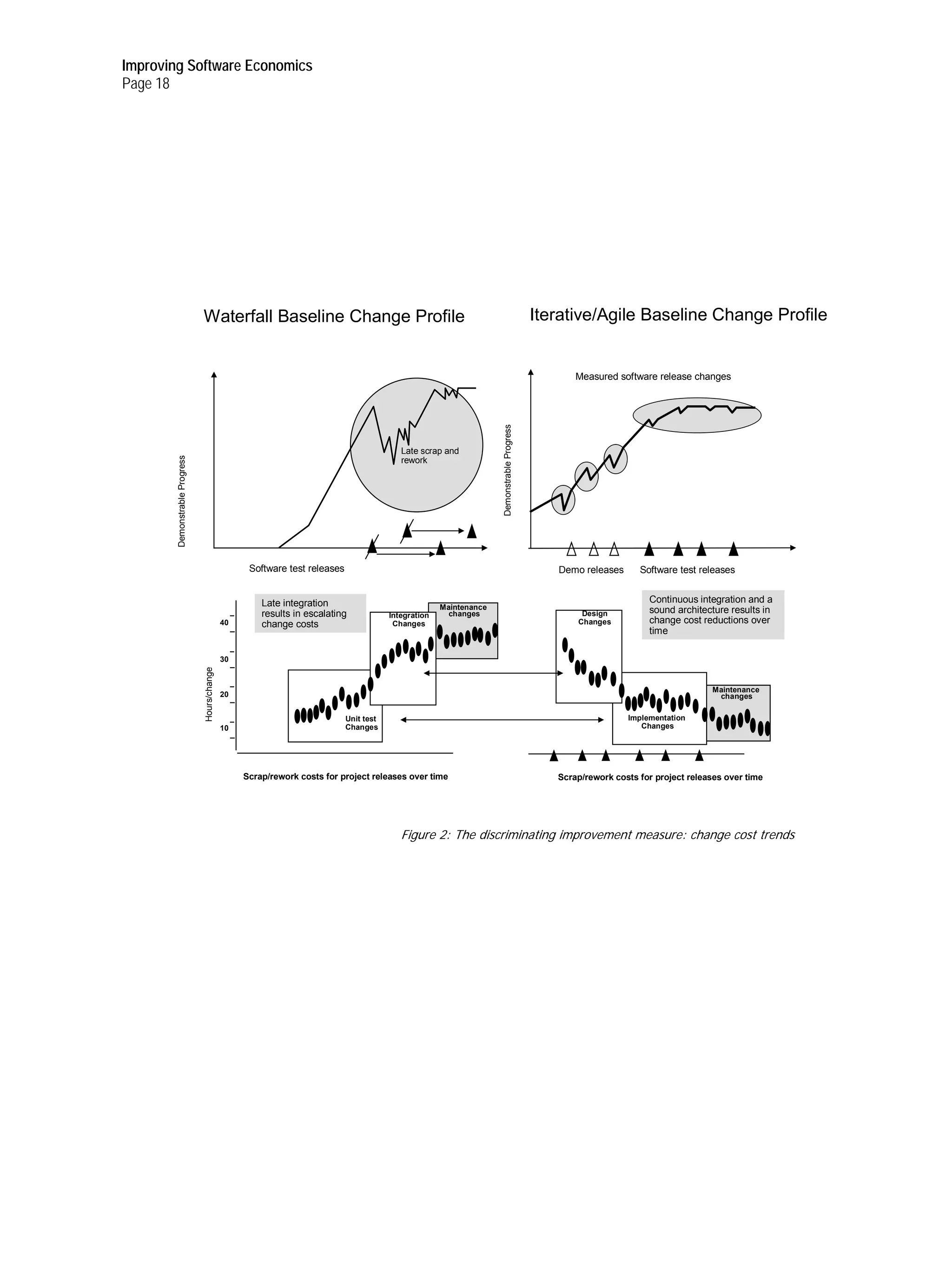


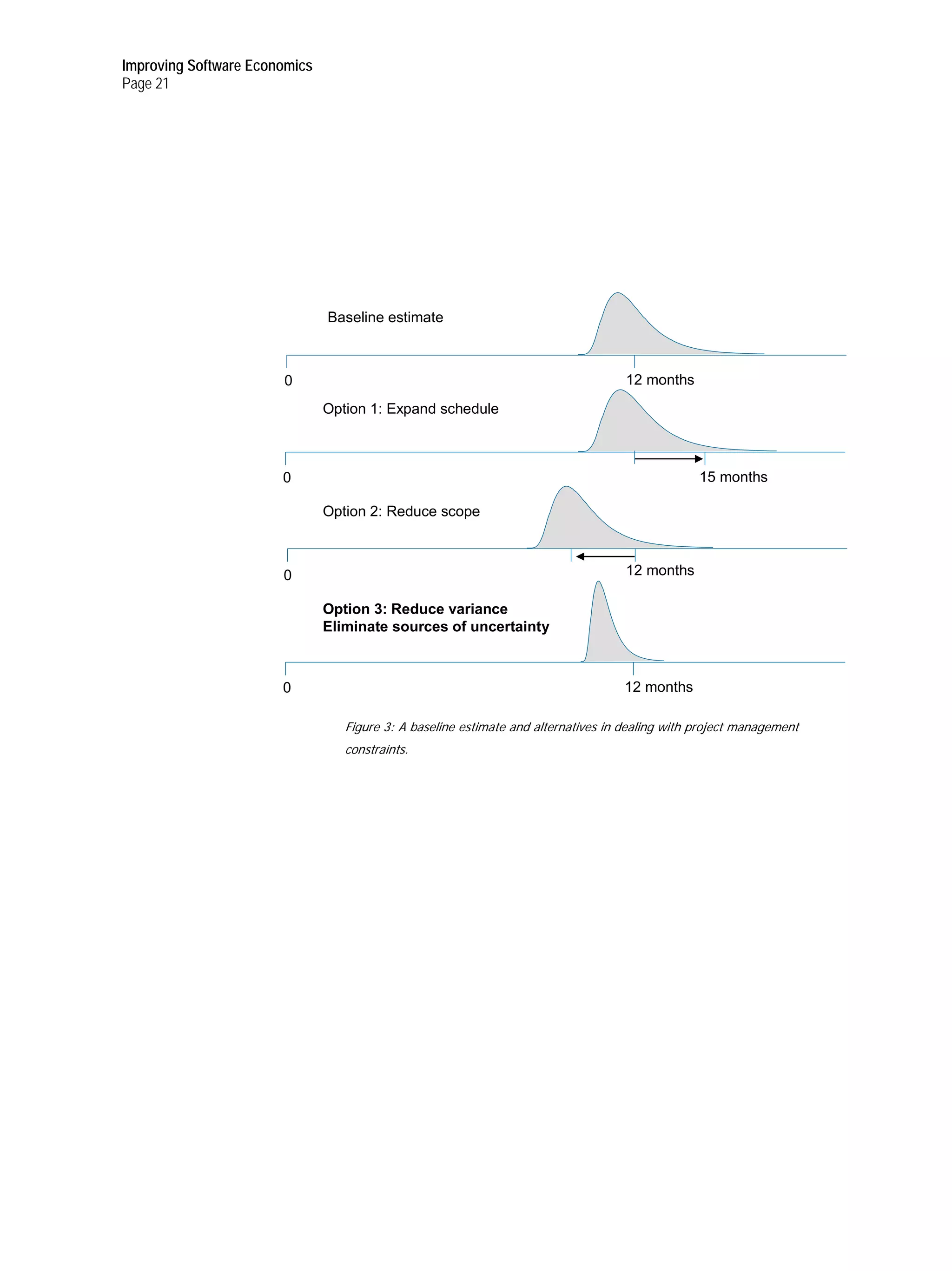
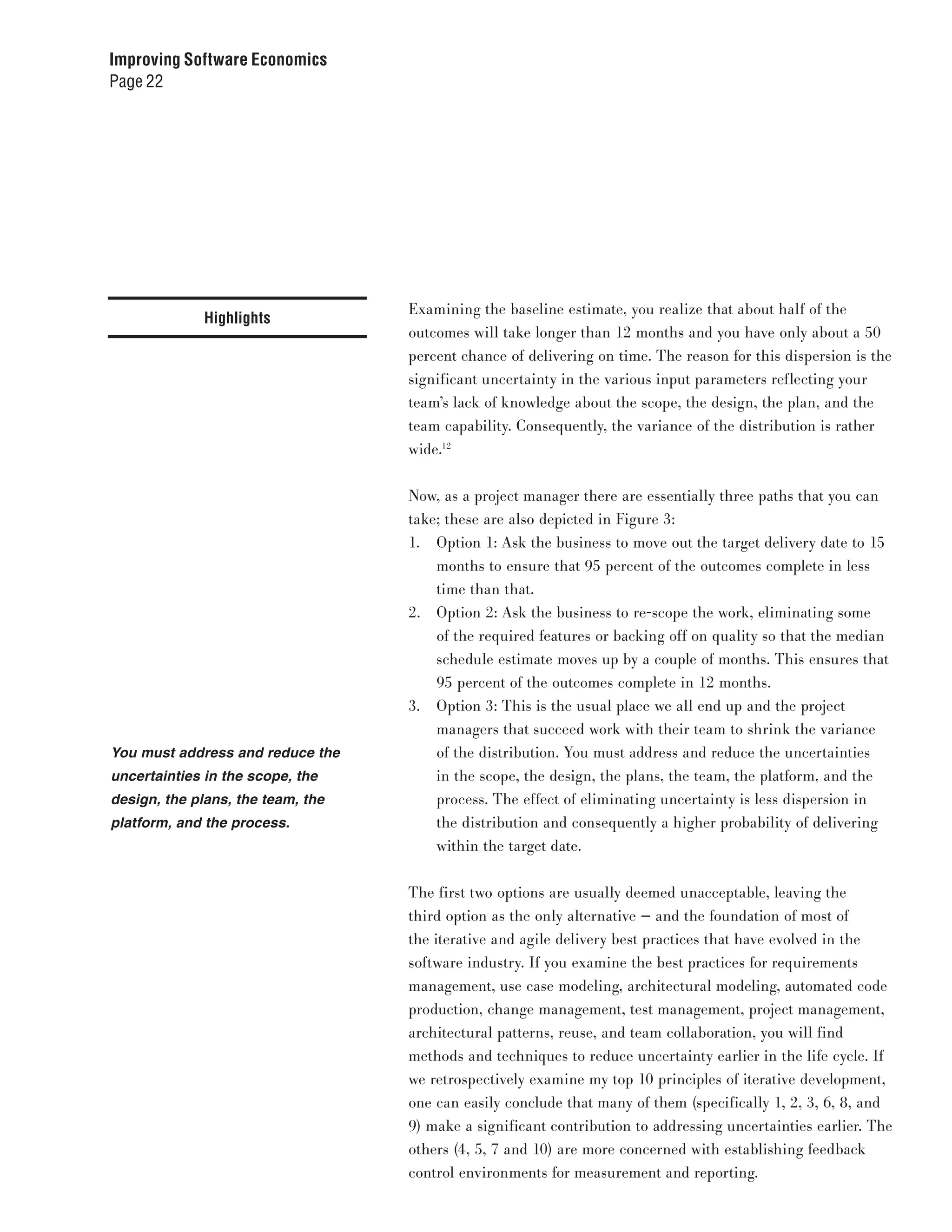
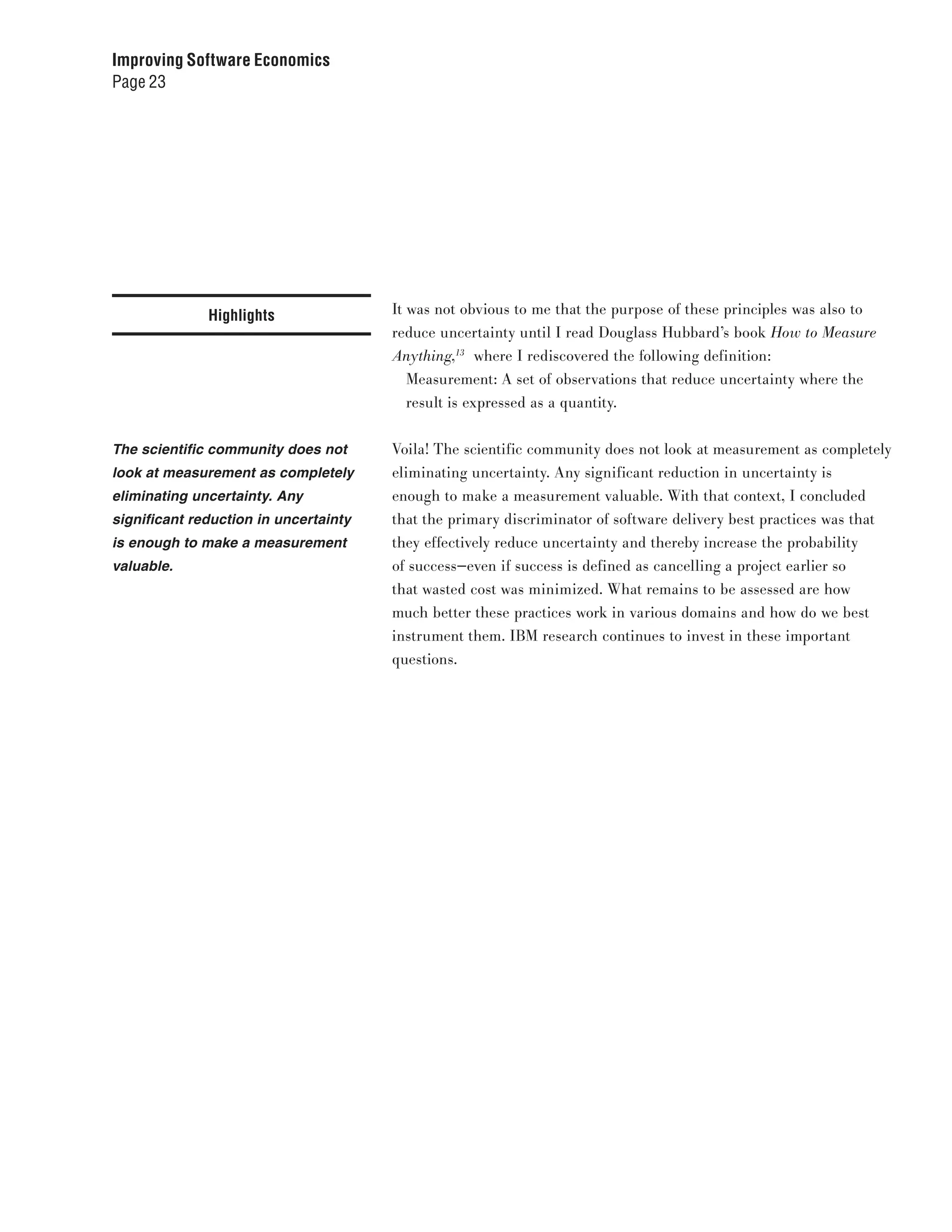
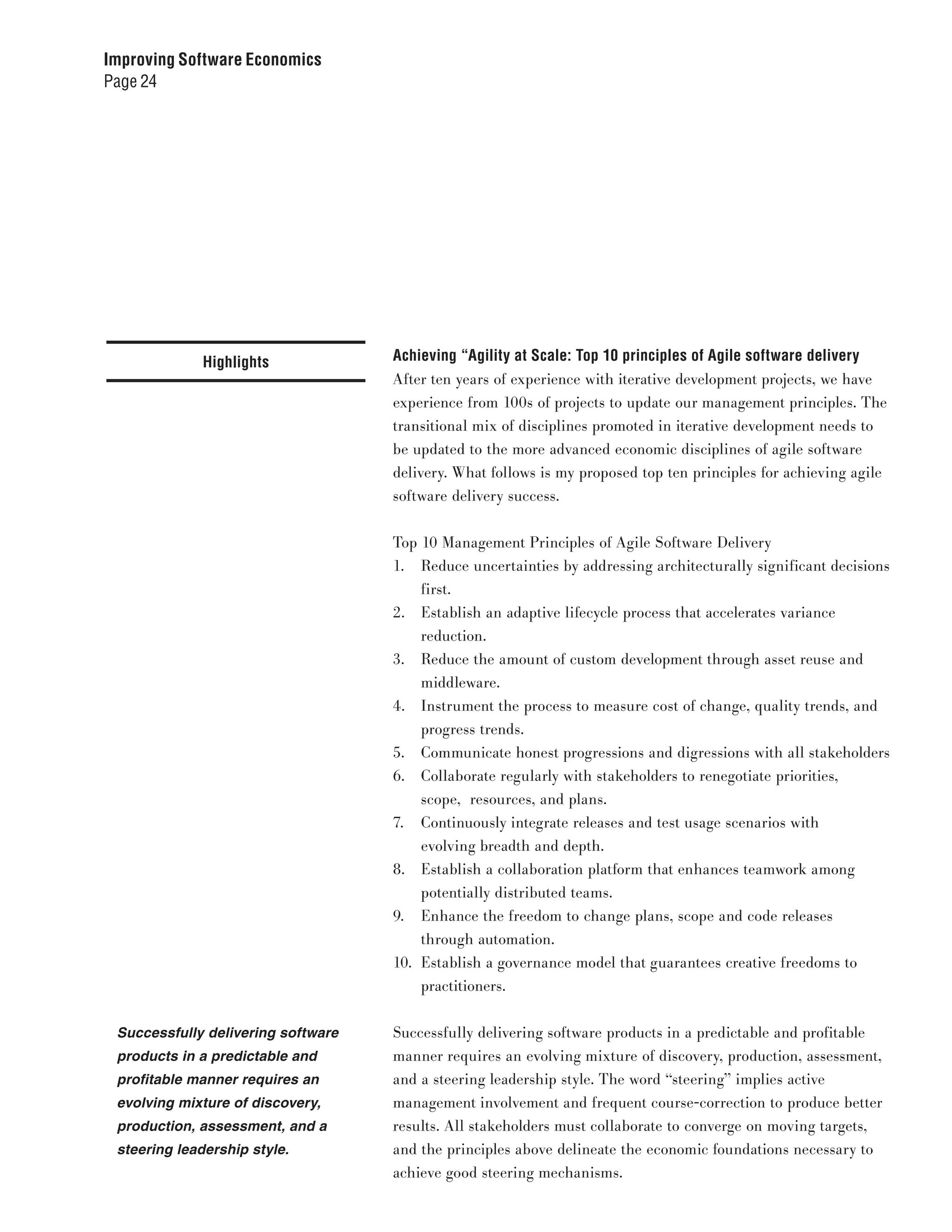
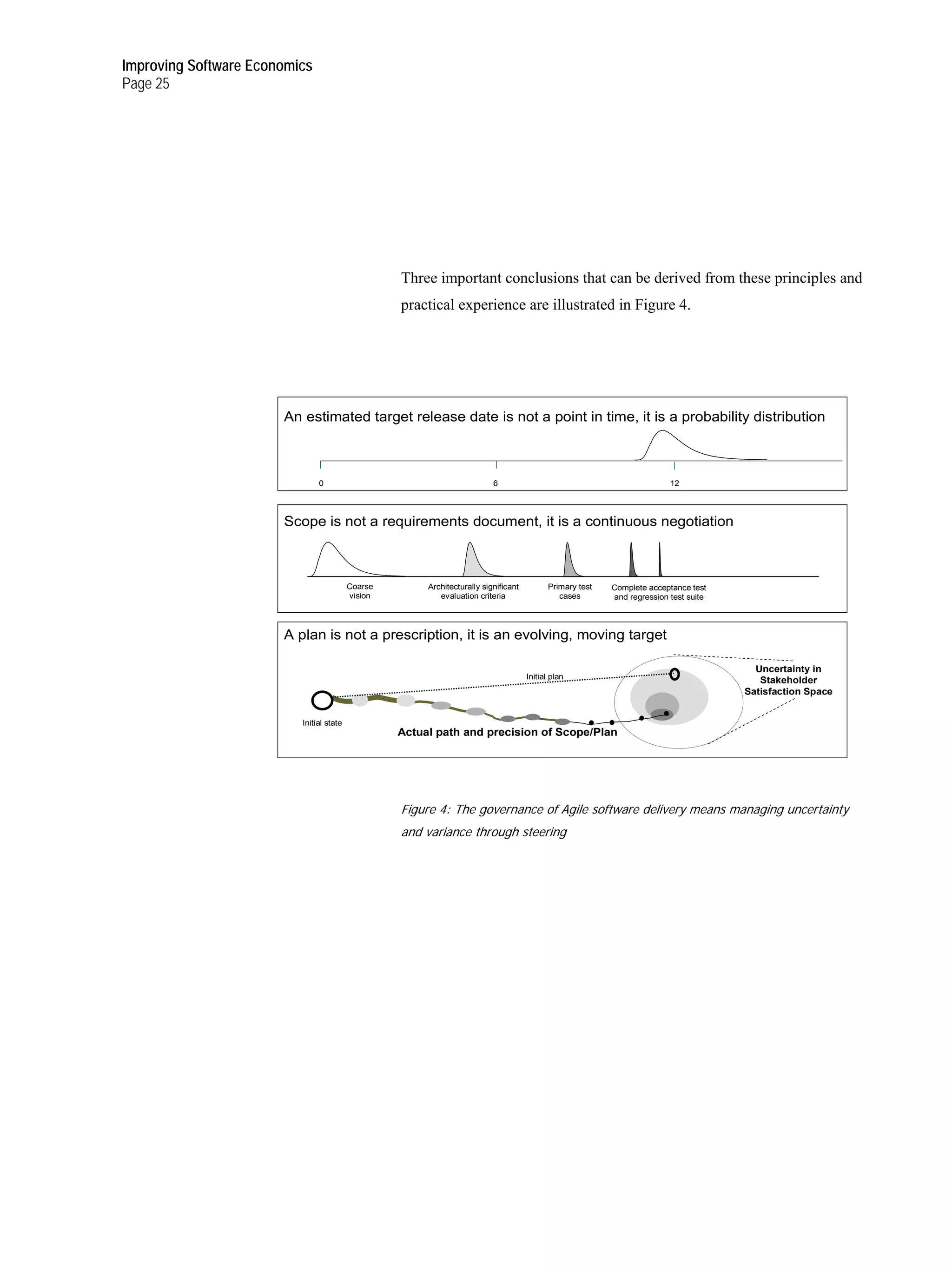

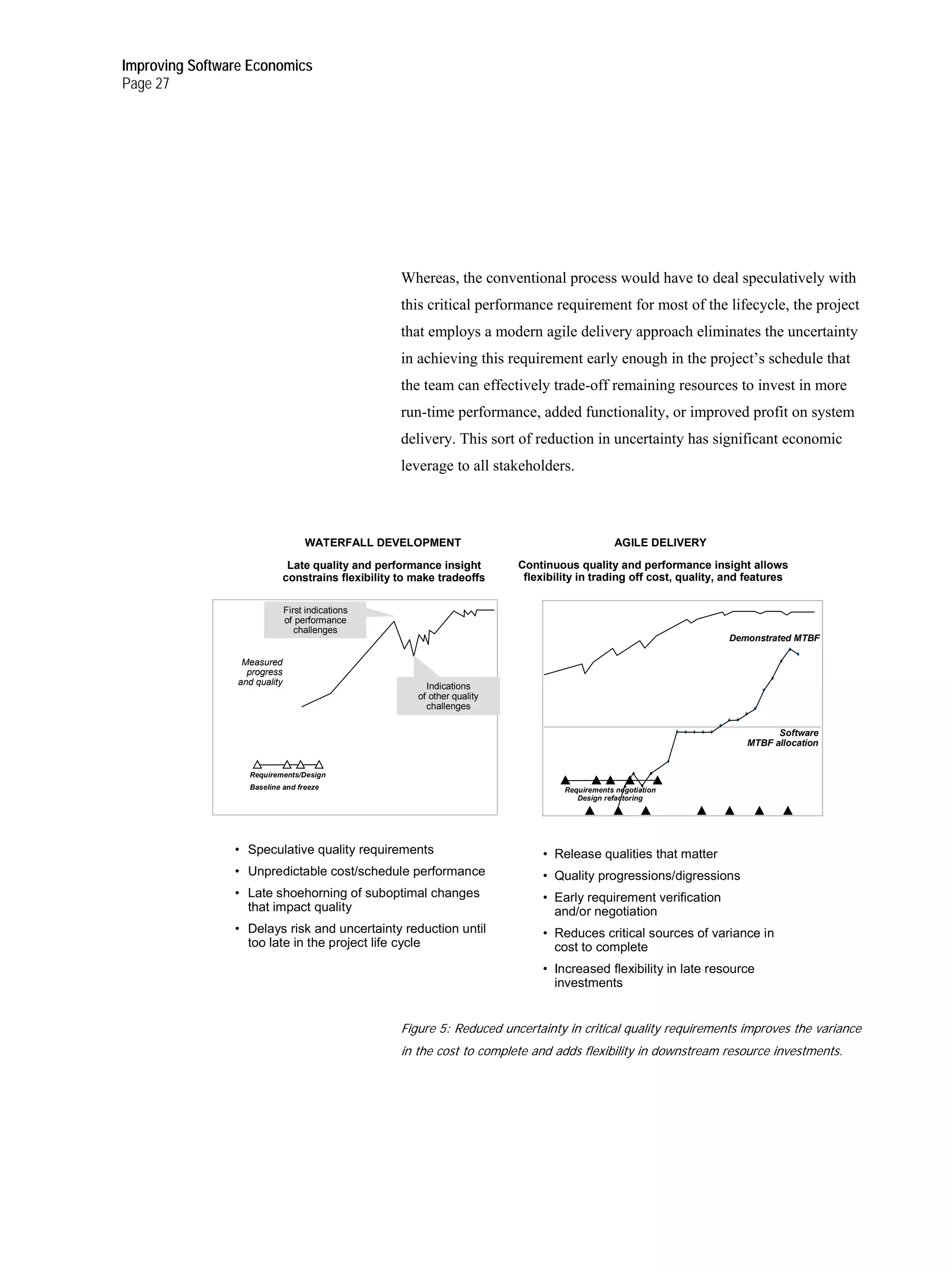
![Improving Software Economics
Page 28
Highlights I have observed four discriminating patterns that are characteristic of
successful agile delivery projects. These patterns represent a few “abstract
gauges” that help the steering process to assess scope management,
process management, progress management, and quality management. My
hunch is that most project managers certified in traditional engineering
project management will react negatively to these notions, because they
run somewhat counter to conventional wisdom.
Scope evolves from abstract and 1. Scope evolves: Solutions evolve from stakeholder needs, and
accurate representations into precise stakeholder needs evolve from available solutions assets. [Anti-pattern:
and detailed representations as Get all the requirements right up front.] This equal and opposite
stakeholder understanding evolves interaction between user need and solution is the engine for iteration
(i.e., uncertainty is reduced). that is driving more and more asset-based development. We just don’t
build many applications dominated by custom code development
anymore. A vision statement evolves into interim evaluation criteria
which evolve into test cases and finally detailed acceptance criteria.
Scope evolves from abstract and accurate representations into precise
and detailed representations as stakeholder understanding evolves
(i.e., uncertainty is reduced).
2. Process rigor evolves: Process and instrumentation evolve from
flexible to rigorous as the lifecycle activities evolve from early,
creative tasks to later production tasks. [Anti-pattern: Define the
entire project’s lifecycle process as light or heavy.] Process rigor
should be much like the force of gravity: the closer you are to a
product release, the stronger the influence of process, tools, and
instrumentation on the day-to-day activities of the workforce. The
farther you are from a release date, the weaker the influence. This
is a key requirement to be fulfilled by the development platform
with automation support for process enactment if practitioners are to
perceive a lifecycle process that delivers ‘painless governance’..
3. Progress assessment is honest: Healthy projects display a sequence of
progressions and digressions. [Anti-pattern: consistently progressing
to 100 percent earned value as the original plan is executed, without
any noticeable digression until late in the life cycle]. The transition
to a demonstration-driven life cycle results in a very different project
profile. Rather than a linear progression (often dishonest) of earned value,
a healthy project will exhibit an honest sequence of progressions and
digressions as they resolve uncertainties, re-factor architectures and scope,
and converge on an economically governed solution.](https://image.slidesharecdn.com/improvingsoftwareeconomics-top10principlesofachievingagilityatscale-110405161635-phpapp02/75/Improving-software-economics-Top-10-principles-of-achieving-agility-at-scale-28-2048.jpg)
![Improving Software Economics
Page 29
Highlights 4. Testing is the steering mechanism: Testing of demonstrable releases
is a full lifecycle activity and the cost of change in software releases
Testing demands objective evaluation improves or stabilizes over time. [Anti-pattern: testing is a subor-
through execution of software dinate, bureaucratic, late lifecycle activity and the cost of change
releases under a controlled scenario increases over time]. Testing demands objective evaluation through
with an expected outcome. execution of software releases under a controlled scenario with an
expected outcome. In an agile delivery process that is risk-driven,
integration testing will mostly precede unit testing and result in more
flexibility in steering with more favorable cost of change trends.
With immature metrics and measures, software project managers are still overly
focused on playing defense and struggling with subjective risk management.
With further advances in software measurement and collaborative platforms
that support process enactment of best practices and integrated metrics col-
lection and reporting, we can manage uncertainty more objectively. Software
project managers can invest more in playing offense through balancing risks
with opportunities, and organizations can better exploit the value of software to
deliver better economic results in their business.
A framework for reasoning about improving software economics
Today’s empirical software cost estimation models (like COCOMO II,
SEER, QSM Slim and others) allow users to estimate costs to within 25-30
percent, on three out of four projects.15 This level of unpredictability
in the outcome of software projects is a strong indication that software
delivery and governance clearly requires an economics discipline that
can accommodate high levels of uncertainty. These cost models include
dozens of parameters and techniques for estimating a wide variety of
software development projects. For the purposes of this discussion, I will
simplify these estimation models into a function of four basic parameters:](https://image.slidesharecdn.com/improvingsoftwareeconomics-top10principlesofachievingagilityatscale-110405161635-phpapp02/75/Improving-software-economics-Top-10-principles-of-achieving-agility-at-scale-29-2048.jpg)


